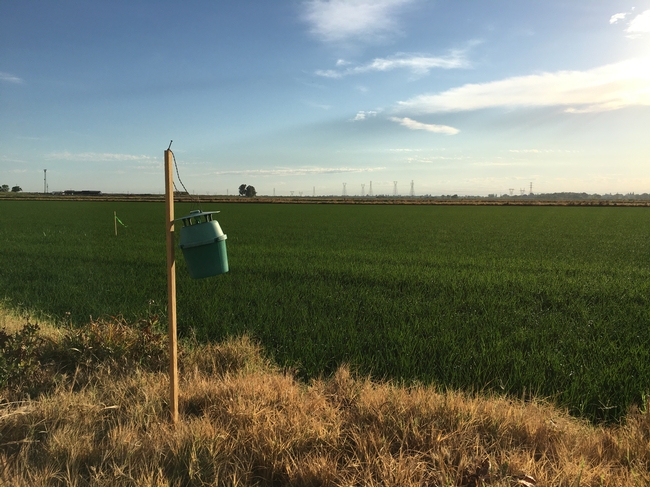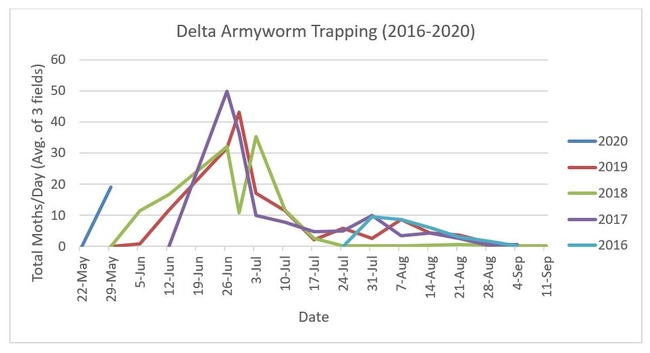
UC Cooperative Extension has responded to the problem by providing outreach on UC IPM guidelines for monitoring and treatment. We have also cooperated with the California Rice Commission on getting Section 18 emergency approvals of methoxyfenozide (Intrepid 2F), which has been approved for the 2020 season. (For more information, please see CA Rice News.) Research and extension efforts have been led by Luis Espino, Rice Advisor in Butte and Glenn counties. He has conducted product efficacy trials and initiated widespread monitoring in the Sacramento Valley. In cooperation with Luis, I have been monitoring populations in Delta rice.
Monitoring involves scouting for damage and deployment of pheromone bucket traps that catch true armyworm and western yellowstriped armyworm moths (Figure 1). Because small armyworms are hard to scout and large armyworms are hard to treat, we use trap counts and Growing Degree Day modelling (i.e. a temperature measure of time) to determine when the worms are “just right” to treat, knowing that armyworm larvae can grow to full size in three to four weeks. During the season, Luis writes a weekly blog to provide real-time information on trap counts to help growers and consultants with scouting and decision-making. Please consider subscribing to the blog.
I have been monitoring populations in the Delta since 2016. This year, I deployed the traps about a week earlier than I have in past years. The traps are already catching moths (Figure 2), so it will be important to begin scouting for feeding damage. I will provide periodic monitoring updates using this blog, but for weekly updates, please consider subscribing to Luis Espino's blog.
Figure 2. 2016-2020 Delta armyworm trap counts. The trap counts represent counts of true armyworm and western yellowstriped armyworm moths. The counts are average across three San Joaquin County fields.
